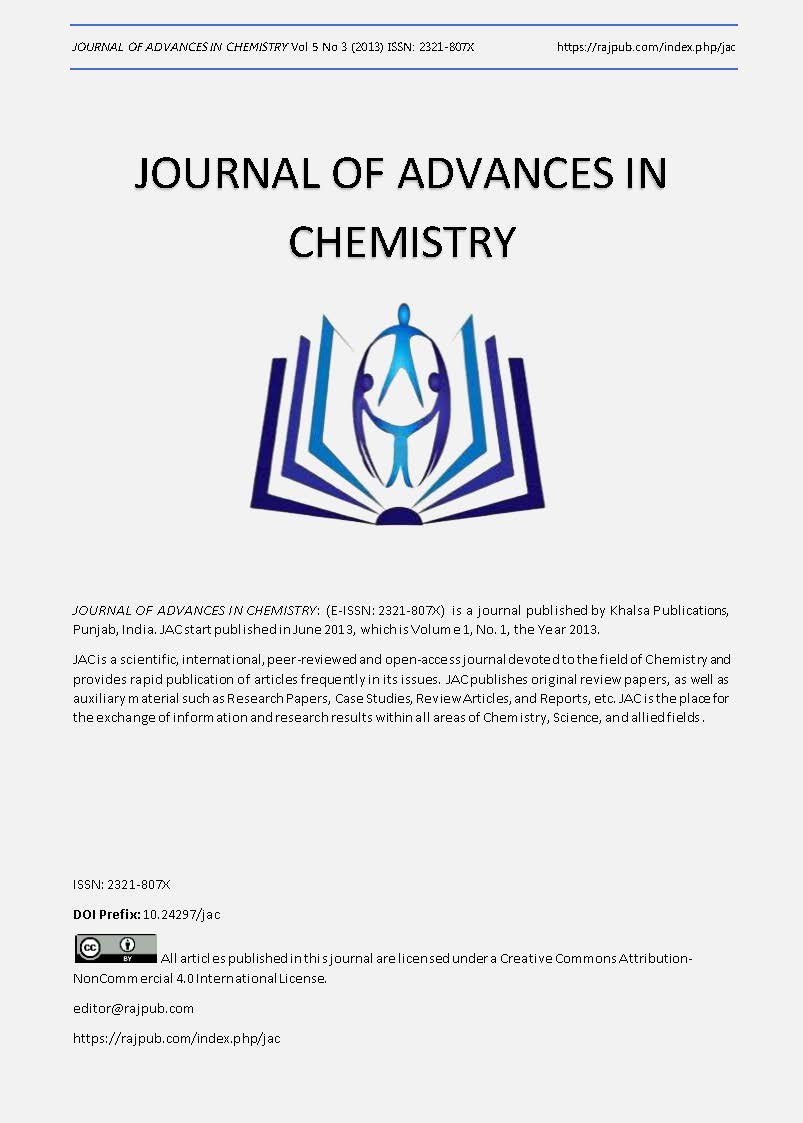Impedance Spectroscopy, Electrical Relaxation and Ac Conductivity Studies of an Organic-Inorganic Hybrid Compound: C12H14N2CuCl4
DOI:
https://doi.org/10.24297/jac.v5i3.2663Keywords:
Organic–inorganic hybrid, Thermal behavior, Infrared spectroscopy, Nuclear magnetic resonance, Electrical impedance spectroscopy, Equivalent circuit, AC conductivity.Abstract
The AC conductivity of the compound, C12H14N2CuCl4, in the temperature and frequency range from 373 to 423 K and 209 Hz – 5 MHz, respectively, is reported. The differential scanning calorimetry and thermogravimetric analysis indicate the presence of a phase transition at 400 K. The Z’ and Z’’ vs. frequency plots are found to be well fit by using the equivalent circuit model. The circuits consist of a parallel combination of bulk resistance Rpand constant phase element. Besides, the analysis of the experimental data based on the jump relaxation model shows that the translation motion of the charge carrier and reorientation hopping between the equivalent sites of the metal chloride anion and the cation groups are responsible for the observed AC conductivity in the temperature regions I (373–400 K) and II (400–423 K). The frequency dependence of the conductivity which follows the Arrhenius equation is interpreted in terms of Jonscher's law: σ (ω) = σdc +A ω S.Â
Downloads
Downloads
Published
How to Cite
Issue
Section
License
 All articles published in Journal of Advances in Linguistics are licensed under a Creative Commons Attribution 4.0 International License.
All articles published in Journal of Advances in Linguistics are licensed under a Creative Commons Attribution 4.0 International License.




